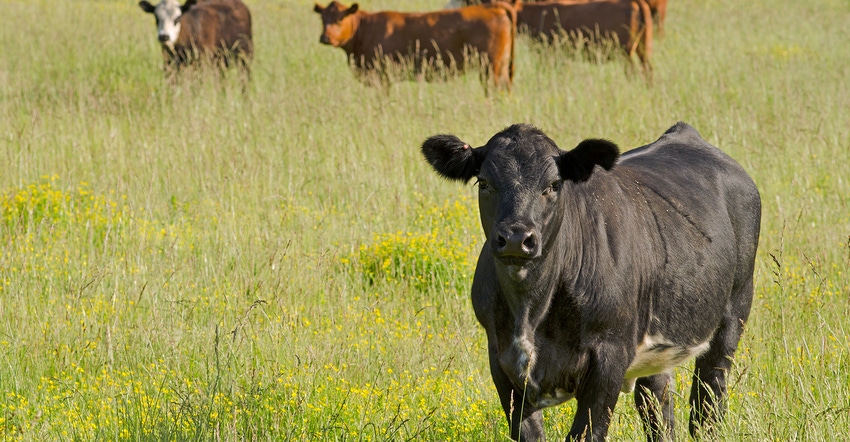February 25, 2019

By Ryan Sterry
It’s no secret that raising replacement females can be a major expense for beef cow-calf producers. Average age to breaking even for recouping heifer development costs varies greatly, with the most efficient producers averaging 5 years of age and less efficient, 7 years or even greater. With that in mind, selecting the right number and right type of replacement females are important decisions for the cow-calf manager.
There is more discussion occurring in the cow-calf industry regarding narrowing the breeding season for virgin replacement heifers. While reproduction is a lowly inherited genetic trait, there is greater investigation into identifying and culling subfertile females sooner. One USDA study tracked replacement heifers that failed to conceive their first breeding season. Giving these heifers a second chance produced only a 55% calf crop when bull fertility was not the issue. One could infer from that data that the group of heifers failing to conceive the first year truly were subfertile and worthy of culling.
While more investigation is needed to determine if narrowing the breeding window for virgin heifers adds to herd fertility over time, it may provide additional benefits. A longtime strategy with replacement females has been to breed them to calve one month earlier than the mature cow herd. This gives first-calf heifers, which bear the added stress of growing while also rearing a calf, an additional month to recover body condition before their first breeding season as a cow.
Producers need to honestly assess in their own herds replacement heifers that conceive to third service or greater lifetime productivity. In other words, these heifers start out their productive lives behind their herd mates. How many ever catch up over time?
Heifer development costs must also be taken into consideration. Or in other words, how can you control heifer development costs without limiting reproduction and lifetime profit? In a study summarized by the University of Nebraska comparing heifers developed to 55% or 60% of mature weight prebreeding, the higher-gaining group gained 0.3 more pound per day at a cost of $22 more per head during the overwintering period. At prebreeding, the higher-gain group averaged 51 more pounds in weight. In actuality, the low-gain group averaged 53% mature weight and the high-gain group, 57%. While a greater percentage of the high-gain group was cycling before first breeding, the 45-day preg rate, calf birth date, calf birth weight, calving difficulty and calf loss were similar for both groups through three calf crops. Cow fertility after the first three calves was also similar.
Weigh options
Given all this information, you, the manager, have several options and decisions you could make.
What is your heifer-rearing cost? If you don’t know, it’s time to pencil it out. If you do know, where do you rank compared to your peers? It’s time for an honest assessment to determine if it’s more economical to produce your own replacements or purchase replacements.
Have you assessed growth and performance to determine if you are overdeveloping, underdeveloping or finding the sweet spot of economically developing heifers that perform well?
How many replacement heifers do you need if raising your own? If you retain only the heifers that conceive in the first 30 to 45 days of the breeding season, how many do you need to retain for a breeding group?
Pencil out your options to market extra or cull replacement heifers. What are the options to market extra bred heifers? If you have ample pastures, can extra heifers fit into a stocker program? For heifers that don’t conceive the first time, is the market better for breeding for a late-summer calving or fall calving?
The right answer to some of these questions may vary year to year based on markets, pasture conditions and feed inventories. In tight margin years, these may be the areas to look to find those extra few dollars.
Sterry is the Extension ag agent in St. Croix County, Wis. This column is provided by the University of Wisconsin-Extension’s Wisconsin Beef Information Center.
You May Also Like




